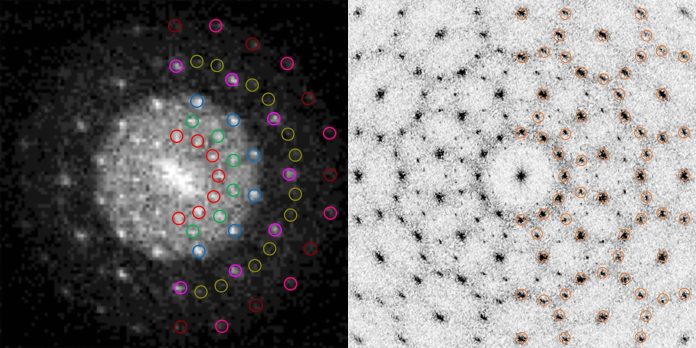A groundbreaking achievement in nanotechnology has been realized as a team of nanoengineers, led by researchers from Northwestern University, the University of Michigan, and the Center for Cooperative Research in Biomaterials in Spain, successfully constructed a quasicrystal using nanoparticles and DNA, the fundamental molecule responsible for encoding life. Their groundbreaking work is detailed in a publication in Nature Materials.
In contrast to regular crystals characterized by repeating structures, quasicrystals exhibit intricate patterns that do not repeat. These unique structures, formed from atoms or nanoparticles, possess remarkable properties, such as their ability to interact with heat and light in unconventional ways. Quasicrystals can also display distinctive electronic properties, like the conduction of electricity without resistance, and feature surfaces with unusual properties, such as extreme hardness or high slipperiness.
Researchers involved in nanoscale assembly regard nanoparticles as a form of “designer atom,” offering an unprecedented level of control over synthetic materials. The primary challenge lies in guiding particles to assemble into desired structures with practical applications. The creation of this first DNA-assembled quasicrystal represents a pioneering advancement in the realm of nanomaterial design.
Chad Mirkin, the George B. Rathmann Professor of Chemistry at Northwestern University and co-corresponding author of the study, emphasized the historical enigma surrounding quasicrystals and their formation. Their discovery was even honored with a Nobel Prize due to its long-standing mystery. While several quasicrystals have been identified in nature or stumbled upon serendipitously, this research not only demystifies their formation but also demonstrates the potential to intentionally design and assemble quasicrystals by harnessing the programmable nature of DNA.
The research team harnessed the expertise of both the Mirkin group, known for using DNA as an adhesive to engineer colloidal crystals from nanoparticles, and the group of Luis Liz-Marzán, an Ikerbasque Professor at the Spanish Center for Cooperative Research in Biomaterials, which could produce nanoparticles capable of forming quasicrystals under specific conditions. The researchers concentrated on bipyramidal shapes, essentially two pyramids joined at their bases. By programming DNA strands to recognize one another, they orchestrated the assembly of particles into a quasicrystal.
In a parallel effort, the group of Sharon Glotzer, the Anthony C. Lembke Chair of Chemical Engineering at the University of Michigan, had been simulating bipyramids with different numbers of sides. This led to the discovery that decahedra, 10-sided pentagonal bipyramids, could form a quasicrystal under particular conditions. This choice of decahedra was strategic, aligning with predictions made in 2009 by Glotzer’s team concerning layered nanoparticle quasicrystals.
By combining theory and experimentation, the research groups successfully transformed decahedron particles into a quasicrystal. The confirmation was achieved through electron microscope imaging at Northwestern and X-ray scattering conducted at Argonne National Laboratory.
The newly formed quasicrystal exhibits a structure resembling concentric circles of rosettes, with the 10-sided shapes creating a 12-fold symmetry in 2D layers that stack periodically. This stacked structure, known as an axial quasicrystal, is similar to those composed of tetrahedra. However, the key distinction lies in the fact that the tiling pattern of the new quasicrystal’s layers does not identically repeat from one layer to the next. A significant portion of tiles differs in a random manner, introducing an element of disorder that enhances the material’s stability.
This research not only advances the field of nanoscience but also opens up new possibilities for advanced materials and innovative nanotechnology applications. The project was supported by several organizations, including the US Air Force Office of Scientific Research, the US Department of Energy, the Spanish Ministry of Science and Innovation, and the Maria de Maeztu Units of Excellence Program from the Spanish State Research Agency. Additionally, the research teams utilized resources from various institutions, further strengthening the impact of their findings.















